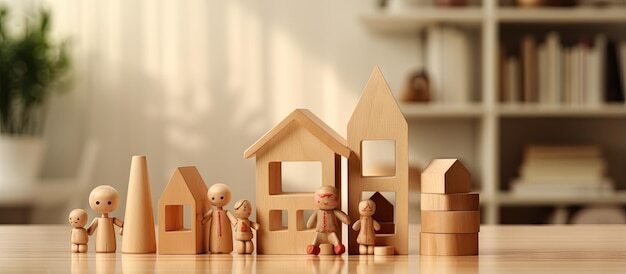
Wooden Toys vs. Plastic Toys: Which Is Better?

Choosing the right toys for your children can be a challenging task for any parent. With a myriad of options available, two prominent contenders often emerge: wooden toys and plastic toys. Each type has its own set of advantages and disadvantages, making it essential to weigh them carefully. In this blog, we will explore the pros and cons of both wooden and plastic toys from a parent’s point of view,helping you make an informed decision for your little ones.
Benefits of Wooden Toys
Durability and Longevity
Wooden toys are renowned for their sturdiness and ability to withstand the rough and tumble of childhood play. Unlike plastic toys that may break or wear out over time, well-crafted wooden toys can last for generations, making them a worthy investment.
Safety and Eco-Friendliness
Parents often prioritize safety when selecting toys. Wooden toys are generally made from natural materials, free from harmful chemicals like BPA and phthalates commonly found in some plastic toys. This eco-friendly nature aligns with many parents’ desires to provide a safe and sustainable environment for their children.
Sensory Development:
The tactile experience of wooden toys can enhance sensory development. The weight and texture of wood provide a different sensory input compared to plastic, fostering fine motor skills and encouraging imaginative play
Timeless Aesthetics:
Wooden toys often have a classic charm that appeals to parents. They can seamlessly blend into home decor, providing a beautiful aesthetic that doesn’t feel out of place in a living room or play area.
Challenges with Wooden Toys
- Cost: High-quality wooden toys can be more expensive than their plastic counterparts. Parents may
need to consider their budget when investing in these toys. - Weight: Wooden toys can be heavier, making them less suitable for very young children who may
struggle to lift or carry them.

Benefits of Plastic Toys
Affordability:
Plastic toys are often more budget-friendly, making them accessible for families looking to build a diverse toy collection without breaking the bank.
Variety and Innovation:
The world of plastic toys is incredibly diverse. From action figures to educational games, the range of options available can cater to every child’s interests. Additionally, plastic toys can incorporate advanced technology, offering interactive play experiences that wooden toys may lack.
Lightweight and Portable:
Plastic toys are generally lighter, making them easier for younger children to handle. They are also convenient for travel, allowing kids to bring their favorite toys along on family outings or vacations.
Challenges with Plastic Toys
Durability: While some plastic toys are designed to be sturdy, many can break or become damaged easily, leading to frustration for both children and parents.
Environmental Impact: Plastic toys can contribute to environmental concerns. Many are not biodegradable and can contribute to plastic waste in landfills, which raises concerns among environmentally conscious parents.
Parents’ Perspectives
When it comes to choosing between wooden and plastic toys, parents often consider factors beyond just the material.
Here’s what some parents have to say
Educational Value: Many parents appreciate wooden toys for their simplicity, which encourages
imaginative play and creativity. They often believe that toys like building blocks or puzzles promote
cognitive skills and problem-solving
Safety First: Parents of toddlers express concerns about choking hazards and prefer wooden toys because they typically have fewer small parts and are less likely to break into sharp pieces.
Playtime Preferences: Some parents find their children gravitate toward brightly colored plastic toys due to their eye-catching designs. However, they often supplement this with wooden toys that encourage deeper engagement and focus during play.
Finding the Right Balance
Ultimately, both wooden and plastic toys have unique strengths that can enrich a child’s play experience. As a parent, you can curate a collection that includes both types of toys, providing a well-rounded environment for your child.
Combining the durability and eco-friendliness of wooden toys with the vibrant, imaginative options found in plastic toys creates an engaging atmosphere that fosters creativity, learning, and fun. This balanced approach ensures that children have access to diverse play experiences that promote various developmental skills.
Conclusion: Embrace the Best of Both Worlds
As you navigate the world of toys, remember that the best choice for your family may involve both wooden and plastic options. By understanding the benefits and challenges of each, you can make informed decisions that align with your values and your child’s needs.
At Avinsaa, we believe in the power of quality toys to inspire young minds. Explore our collection of thoughtfully designed wooden toys that not only entertain but also contribute to your child’s development. Invest in playtime that’s safe, sustainable, and enriching for your little ones.






